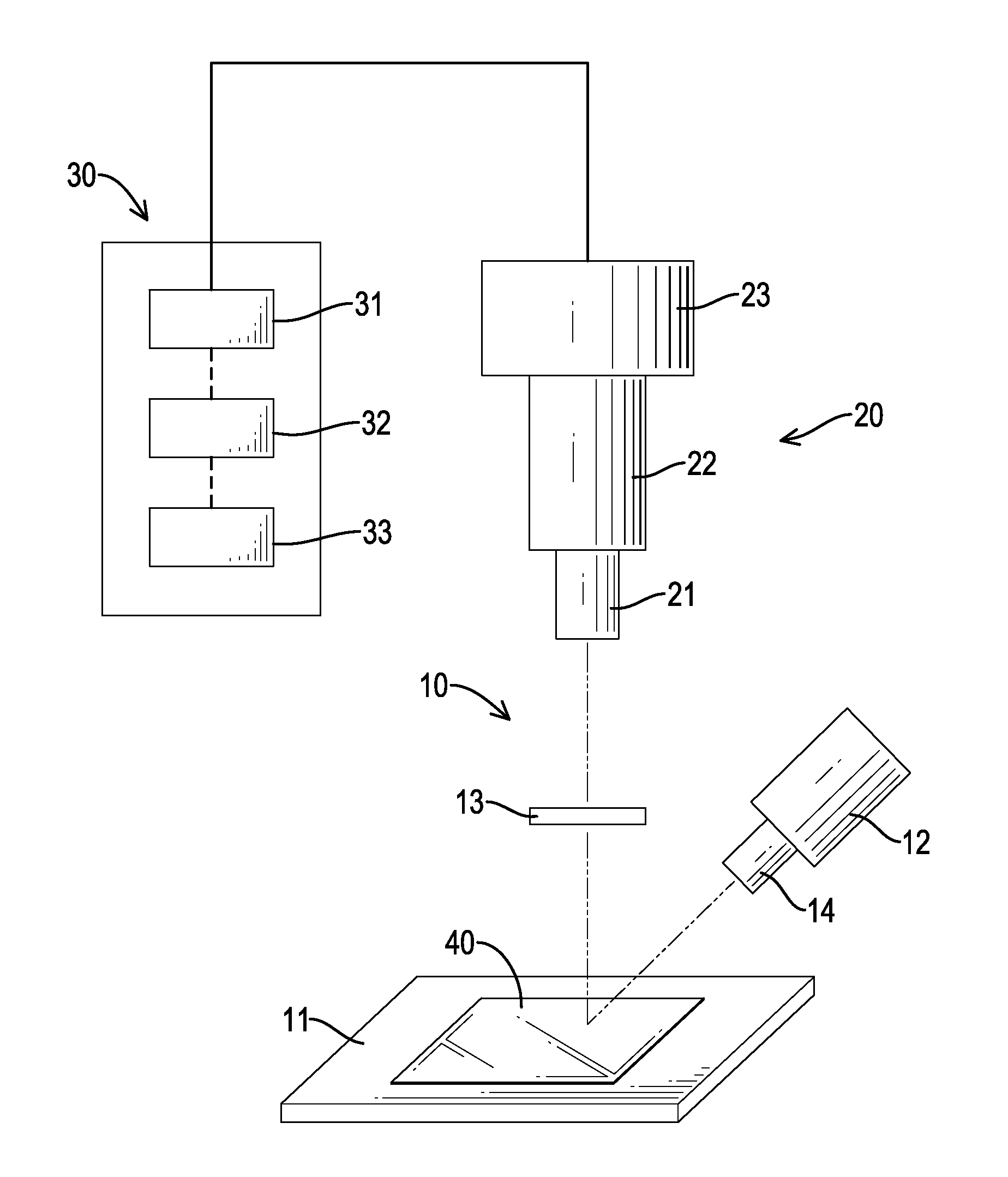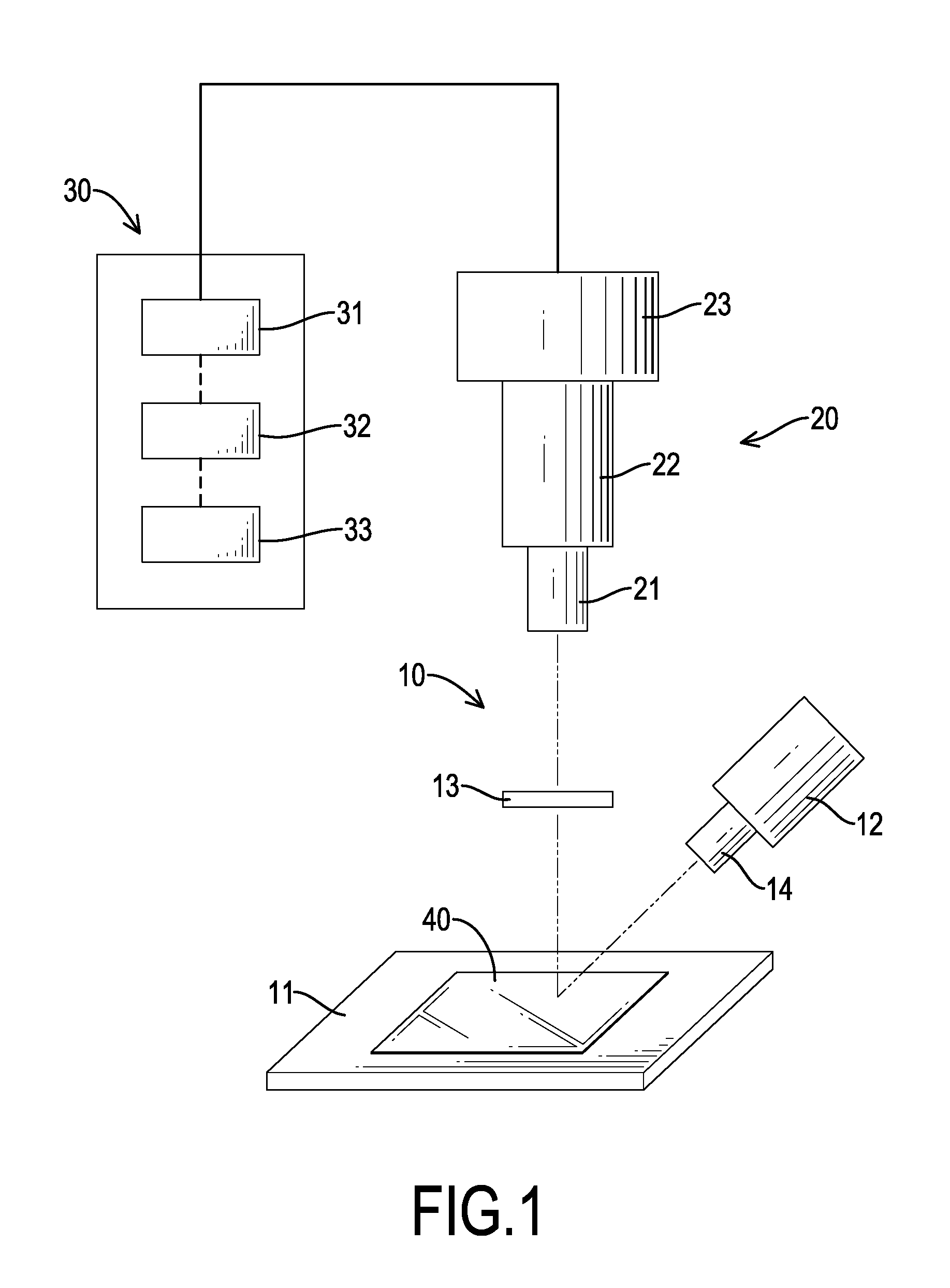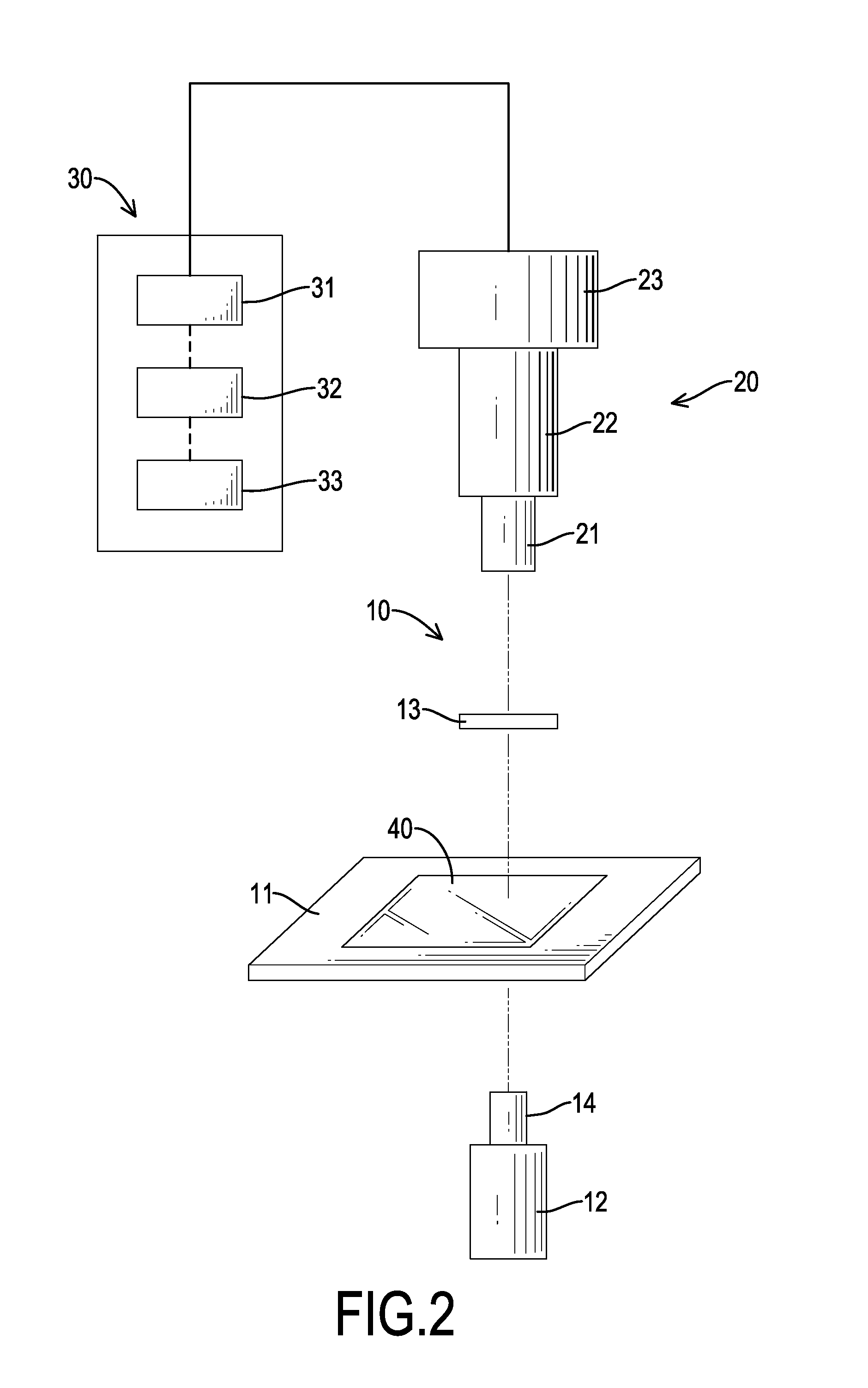System and method for detecting number of layers of a few-layer graphene
a graphene and number detection technology, applied in the field of system for detecting the number of layers of a few-layer graphene, can solve the problems of significant time-consuming and laborious verification, the inability to determine the number of layers of an flg, and the technique based on afm also requires a significant amount of time to complete a measurement, so as to overcome the restrictions of substrate thickness and structure, easily and accurately detect the number, and effectively implement detection and analysis
- Summary
- Abstract
- Description
- Claims
- Application Information
AI Technical Summary
Benefits of technology
Problems solved by technology
Method used
Image
Examples
example 1
[0088]The instant example relates to preparation of an FLG.
[0089]In the instant example, a copper foil is employed as a catalyst for developing large-area single-layer graphene thin films under a low pressure environment, using methane as a carbon source. Developed graphene thin films are then transferred with polymethylmethacrylate (PMMA) to substrates of various types, such as silica / silicon substrates or glass substrates. Details for preparing the FLG are within the scope of the prior art and thus are omitted here.
[0090]With reference to FIG. 5, a 3-layer FLG is formed on a silica / silicon substrate. On the silica / silicon substrate there are zero-layer (marked with the symbol “0L”) regions, that is, bare substrate without being covered by graphene, and one-layer (marked with the symbol “1L”), two-layer (marked with the symbol “2L”) and three-layer (marked with the symbol “3L”) regions covered respectively by corresponding layers of graphene.
[0091]With reference to FIG. 6, a 5-laye...
example 2
[0092]The instant example relates to a matrix of transformation between a spectrometer and an image-acquiring device. The image-acquiring device employed in the instant example comprises an optical microscope and a CCD camera operably connected to the microscope.
[0093]The spectrometer employed in the instant example is model number QE65000 spectrometer of Ocean Optics. The spectrometer is used to obtain transmission spectra of the 24 colors listed in Macbeth ColorChecker within the visible band of spectrum.
[0094]A model is built by multispectral calculation based on the obtained transmission spectra of the 24 colors. The color differences between simulated colors and the image-acquiring device are shown in Table 2, which lists the 24 colors used to build modules for image reproduction as well as the 24 colors' respective reflection spectra and the color differences between simulation colors and microscopic colors. In Table 2, the 24 colors are numbered and listed in reversed order o...
example 3
[0103]The instant example relates to color-reproduction using simulation spectra.
[0104]Every pixel of the image obtained by the spectrometer are multiplied by RGB to generate linear regression matrix [C], which gives corresponding XYZ values with calculation with Equations 2 to 4. The simulation spectrum of each color (380 nm to 780 nm band) is obtained via Equation 12.
[Spectra]380-780nm=[E][M][XYZ][Equation12]
[0105]With the technique of the present invention, the spectrum obtained with the spectrometer under halogen light source is divided by the spectrum obtained with the image-acquiring device under the image-acquiring illumination environment and then multiplied by a spectrum of a new substitution light source. The technique of the present invention makes possible the reproduction of colors under the substitution light source, which may be any light source.
[0106]In order to confirm the feasibility of color reproduction, the error between the actual spectrum and the simulation sp...
PUM
 Login to View More
Login to View More Abstract
Description
Claims
Application Information
 Login to View More
Login to View More - R&D
- Intellectual Property
- Life Sciences
- Materials
- Tech Scout
- Unparalleled Data Quality
- Higher Quality Content
- 60% Fewer Hallucinations
Browse by: Latest US Patents, China's latest patents, Technical Efficacy Thesaurus, Application Domain, Technology Topic, Popular Technical Reports.
© 2025 PatSnap. All rights reserved.Legal|Privacy policy|Modern Slavery Act Transparency Statement|Sitemap|About US| Contact US: help@patsnap.com



